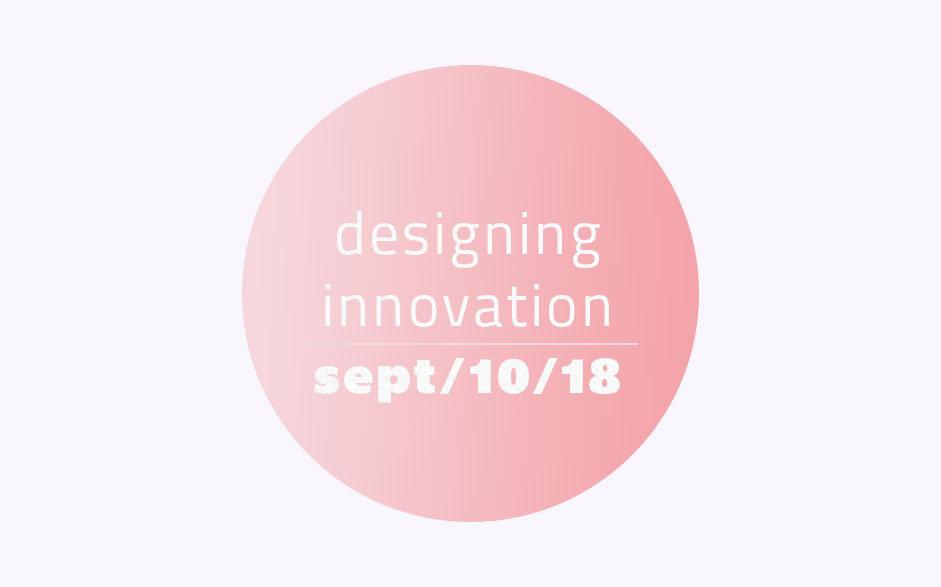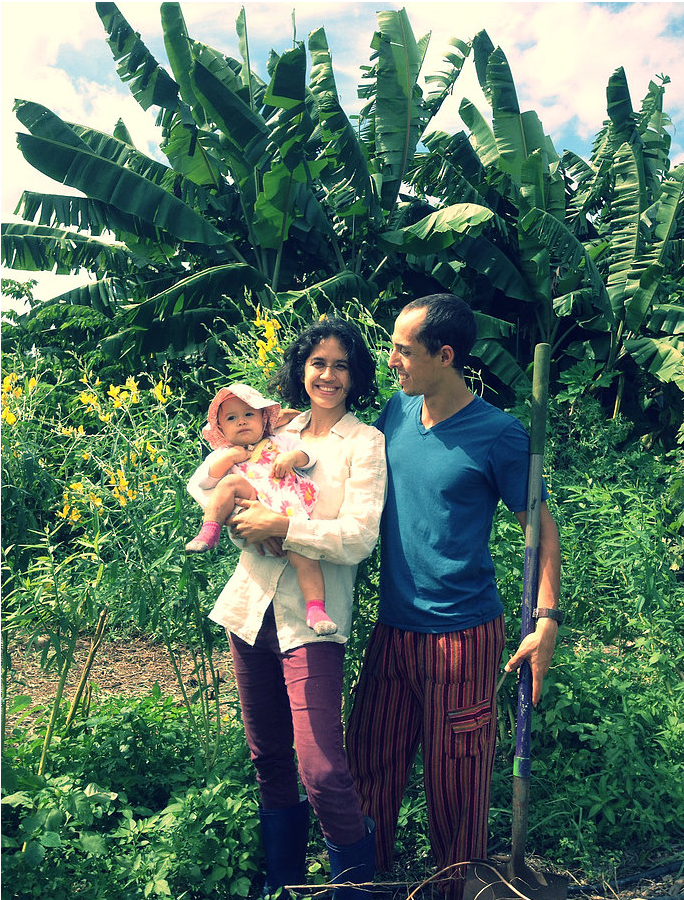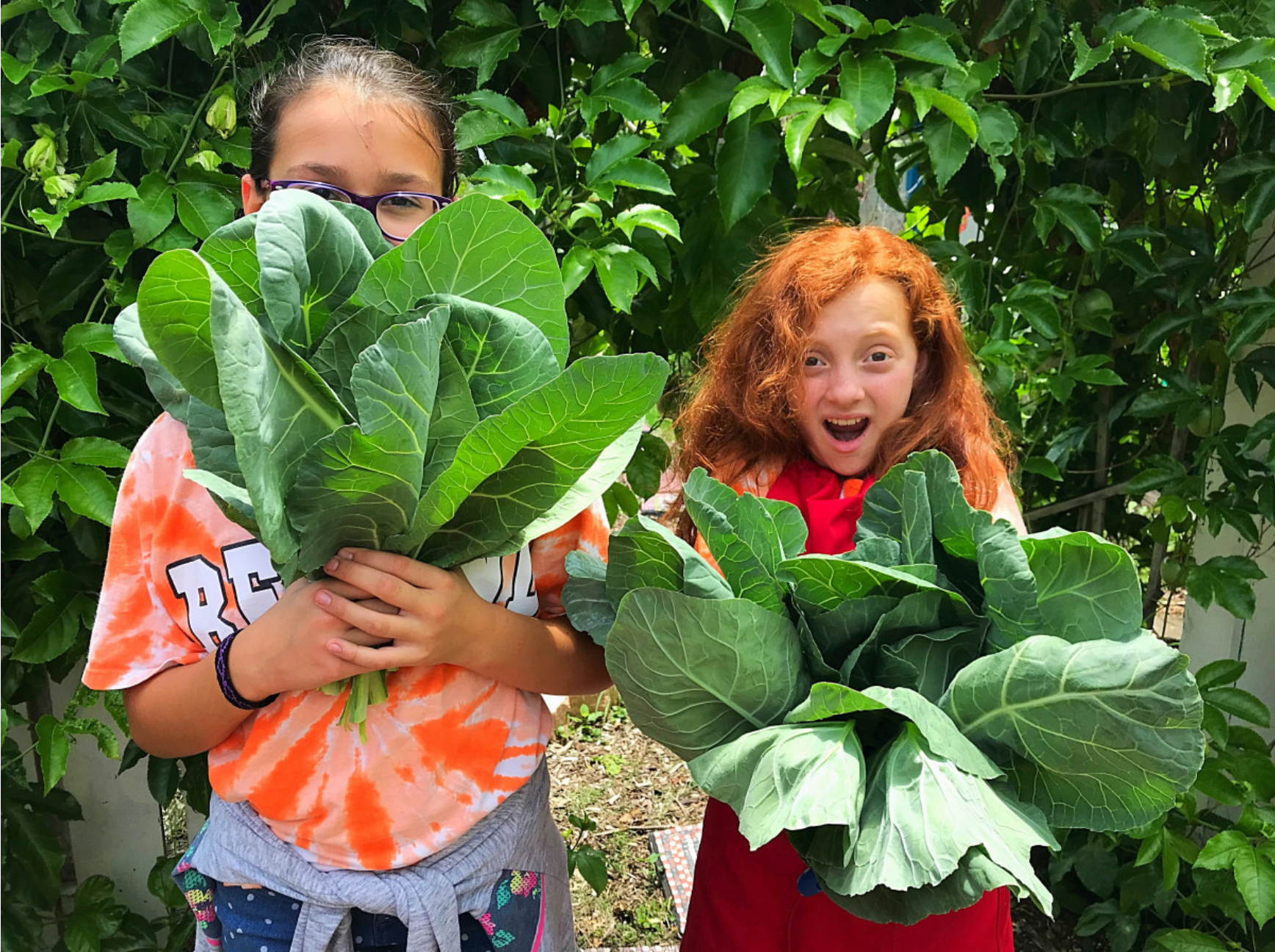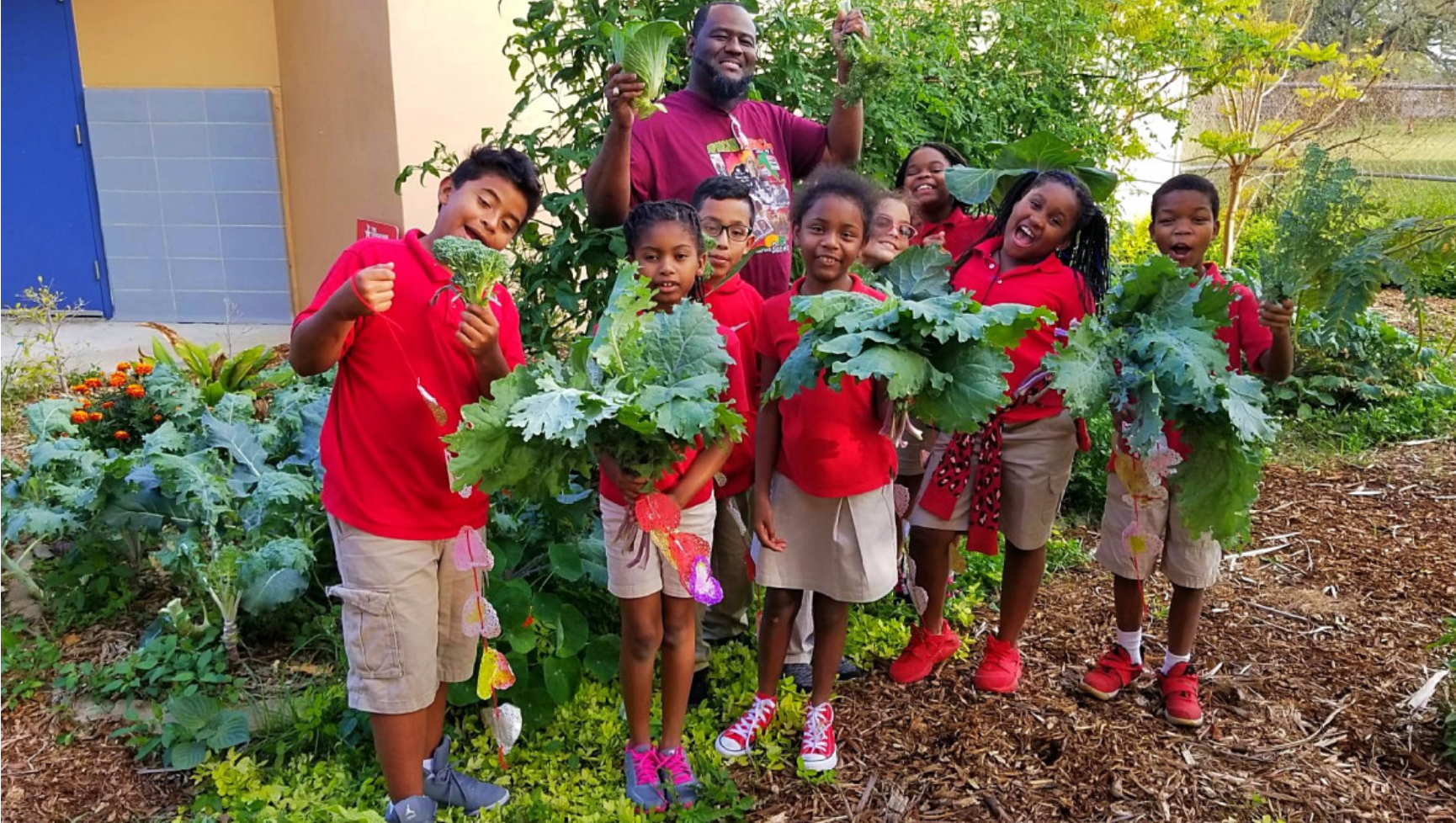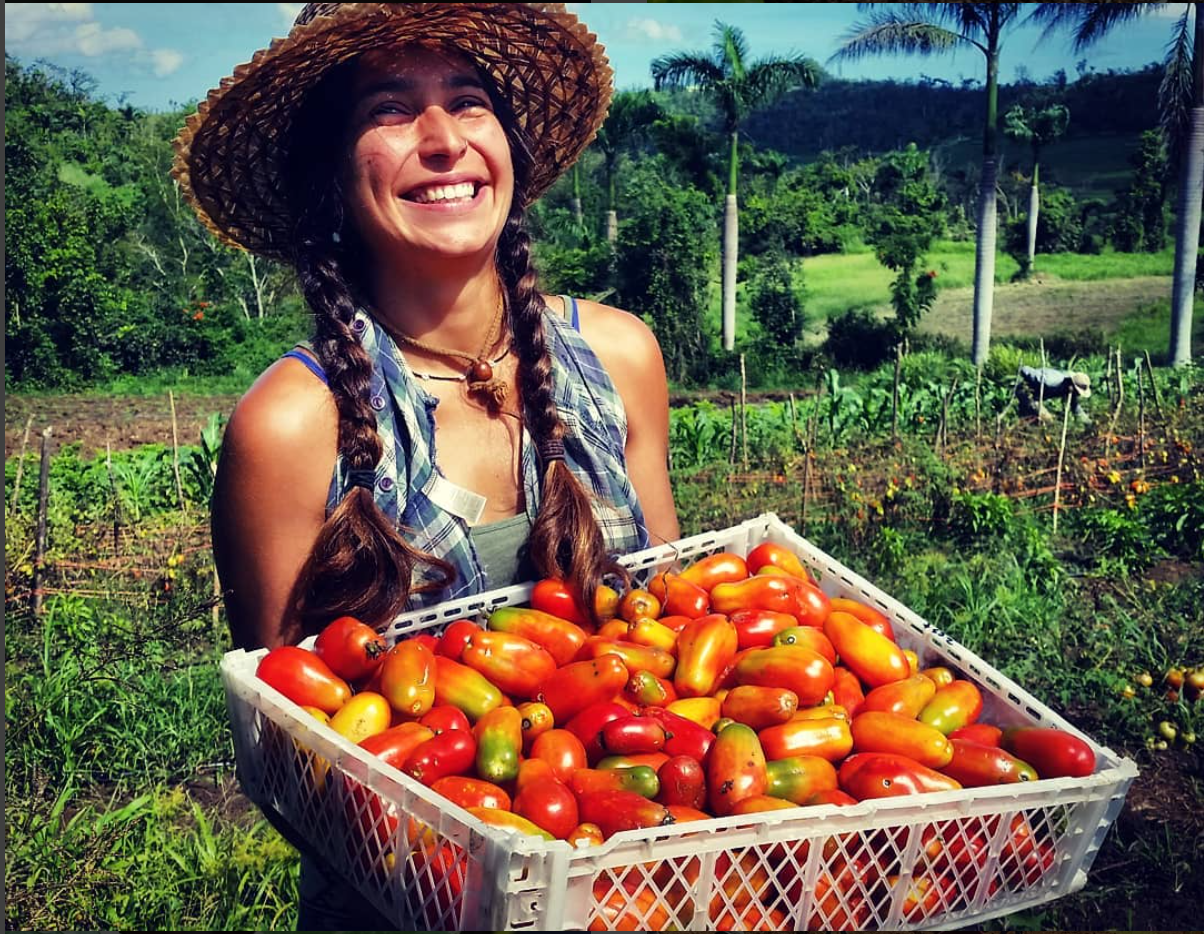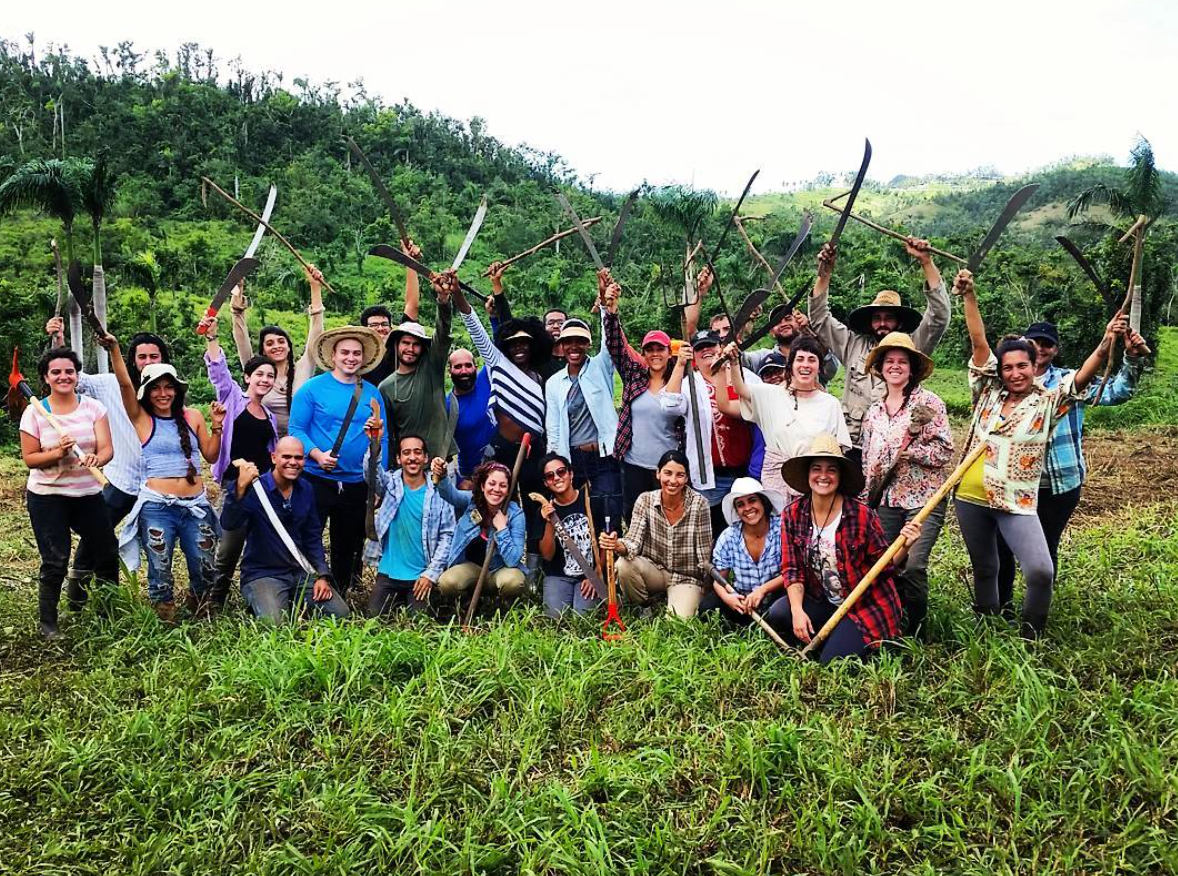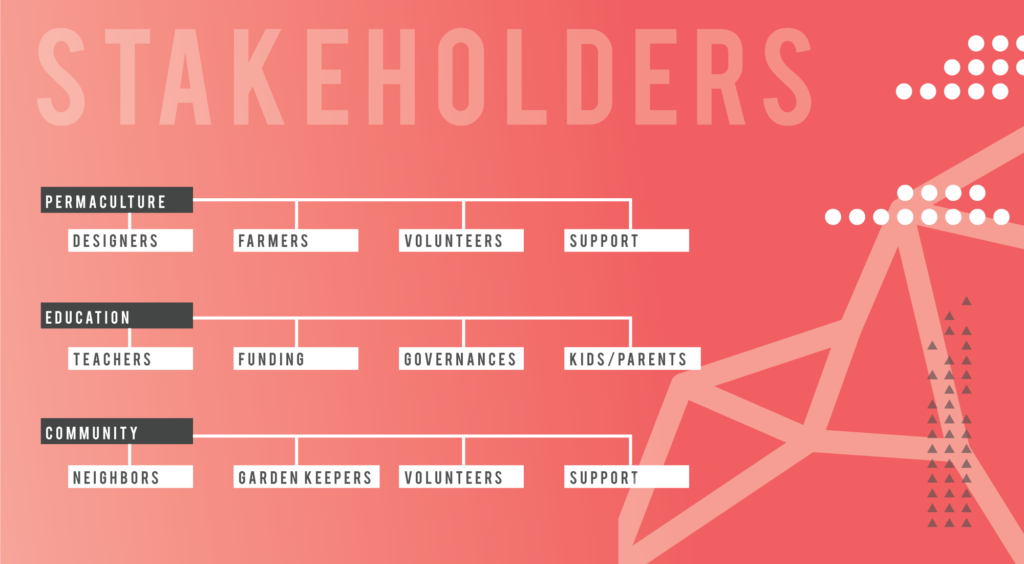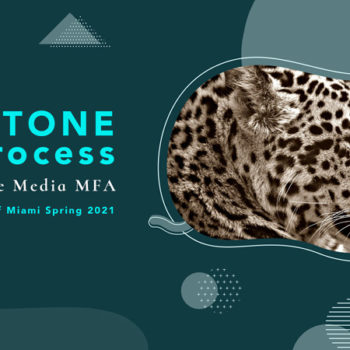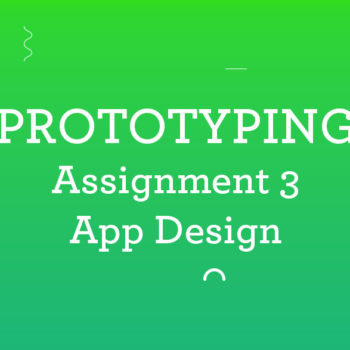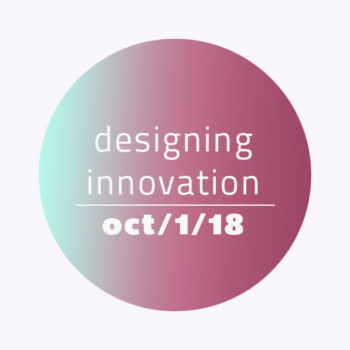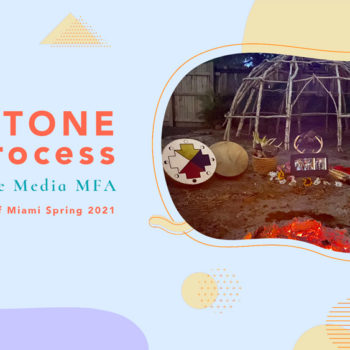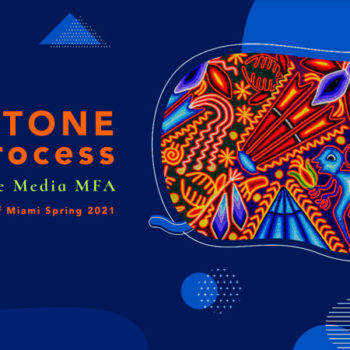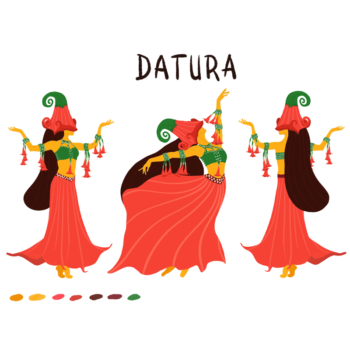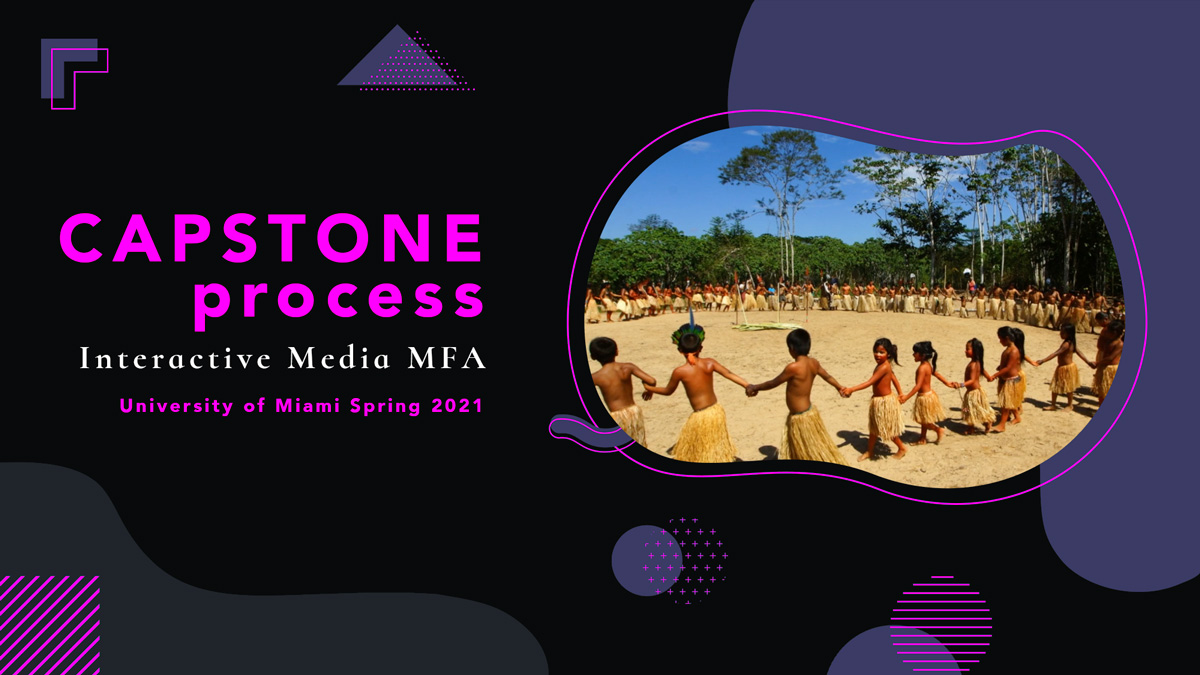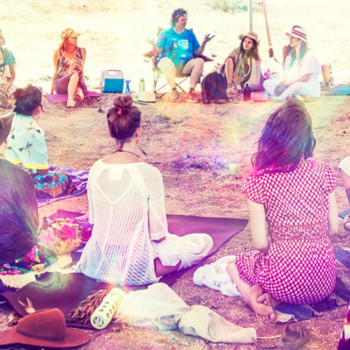Continuing with our research for the “Anti”-Social Network project, our team was assigned to conduct interviews with the stakeholders we outlined in the prior week. Each of our team members is to conduct 3 interviews with people who are
interested in
- Permaculture
- Permaculture system designers
- Farmers
- People who have their own gardens
- People who work with the Education Fund to design permaculture systems in schools
America Permaculture • Carolina, Jade Mar and Emiliano Camargo Harvesting Collard Greens Food Gardens in Schools Suley • El Josco Bravo El Josco Bravo
Interviews
The interviews conducted by myself are the following:
(You can read all interviews by clicking on the name of interviewee. Must be signed in with a Gmail account).
Carolina Alzate • Amerikua Permaculture Design
Anthropologist • Permaculture System Designer
Interview Carolina – Permaculture System.m4a
The purpose of this interview is to do some research for a future design for an “Anti” Social Network. What we are trying to do is create a network, a platform let’s say, similar to Facebook, Twitter, and Instagram that people can connect through this app, or platform, and then to actually meet and create community through this platform. This platform would enable people to actually meet (in person) and create community as opposed to being anti-social.
Can you please tell me your name and what you do as your livelihood?
My name is Carolina, part of the things I do for my livelihood is Permaculture design. I have a family business with my husband Emiliano called Amerikua Permaculture and we design and install permaculture systems for residential, commercial, small and large farming systems too. We focus on edible gardening because that is one of the concepts more people can understand.
We also teach, we teach the community through workshops and now we are going to be teaching a permaculture course to certify other community members to become permaculturists themselves.
Now that you talk about permaculture, can you define what permaculture is?
Yes, There are many ways to define it but a simple way that I like to define it as is that is a science of design to create sustainable, and more than sustainable, regenerative systems here on earth that meet our demands as human beings but at the same time, take care of all the creatures and organisms in a good way.
What is a regenerative system?
A regenerative system is that if you see it on a line graph on one end of the spectrum, you things that are degenerative, a system that are making worse things off here on earth, then in the middle you have sustainable, which keeps things the way they are, for example, if you go to a natural pristine forest, it’s good to think about it as being sustainable, you want it to continue the way it is, but now living in the world that we are in, we have degenerated so much that we can’t hold on to things being sustainable, we have to go one step further, into being regenerative, so we are improving upon the way things are both for humanity and everything here on earth.
How do you start a process of design for a client where they have space where they want to create a food garden or a permaculture system either in their homes, yards, schools? What is the first thing that you do after the client hires you?
The first thing we do is that we have an initial permaculture design consultation and in this consultation, it usually lasts about 3 hours. The first thing we do is spend time with the client. We spend a good hour or more with the client listening to their needs, and not just the needs of the client, but also we like to sit with everyone who is part of the home or the site with whom we are going to be working with.
If it’s a residential home, we like to talk to the family. If we are doing a commercial project, we like to meet not only with the owners but also with everyone who will benefit from the entire project, like the farmers.
It’s nice to think about the needs of everyone there. And Not only looking at their needs but also their vision on a small scale and on a large scale. Short term or long term.
Once we have all that information, then we usually go outside and we go to the landscape, also to the home. The home is very important because the way space is distributed out inside the house will also dictate for us and give us clues on how we can design the outside space.
In what ways does the home distribution dictate the design?
You want to be as energy efficient as possible. Let’s say if we design a part of the system which requires a lot of your attention wouldn’t be placed on the other side of the house where it is not as easily accessible to the owners.
Let’s say, for example, part of the system that demands a lot of your attention, you don’t want to put it behind the house in a corner where you never go to, you want to place this garden near the entrances or exits, and stuff like that. If you want to cook something you don’t have to go to the other side of the house to get it. We pay attention and take into account what is your natural energy pathway if I have three doors in my house but I never go through one of them, I wouldn’t place an herb garden behind a door that never gets used.
This is why the interview with the client is so important. We want to know your natural energy flow and we then go outside and meet the land and usually get some basic, very superficial measurements and grab all the information, The client would give us a tour and give us ideas as what they might have and then we put that together and we come up with a Permaculture Design proposal that is very detailed layout of what we are going to do based on the needs and vision of the client then we make a cost estimate design wise and installation wise.
Some clients may want just design of the system, others may want the design and installation and other clients may also want the maintenance of the space. We also send the client a questionnaire to see if the client would like to be part of the project in the sense of if they want to be part of the installation process, we let them be part of it and they also learn and is more cost-effective and this gives the opportunity to learn the process and learn about maintenance. Even though it takes more time to teach them, we like that because it means that if they are willing to participate, they are more willing to maintain the system and more chances that this system will thrive as opposed to it fading away.
This is a great way for people to get involved and people to learn new things.
Yes, and to begin that relationship. The idea in permaculture is to not think yourself as separate, me and my garden, it’s more me as part of my permaculture system for them to be able to begin forming a relationship where they are constantly evolving whatever we did for them and to see this as not a stagnant thing.
Yes because they are living organisms that have to be maintained.
Looking at this in the bigger picture, how can a food forest like this or a permaculture system benefit a community. Do you see these kinds of projects happening here in Miami?
Food forests are all permaculture systems, so a food forest as part of a permaculture system can generate so many things. It generates connection instantly because a permaculture system is all about relationships and connection. It’s also something that generates abundance so we all want to be abundant. It has a lot of potential. Food brings us together and the food forests create that abundance for us to come together in that way.
Can you tell me the difference between a permaculture system and a food forest?
A food forest can be a permaculture system within itself or it can be a part of a larger permaculture system. Permaculture is all about systems thinking. A food forest is that opportunity we get to mimic an actual forest but in a way that is productive an yielding and those yields meeting our needs but it’s a permaculture system in a sense and it’s a forest because it isn’t a classical orchard like a food grove where there are trees and grass but also there are other systems where you are growing all sorts of layers there in the system.
You are thinking about everything that happens in a forest that you have your root crops, your herbaceous layer, and your ground covers and your vining plants and you’re thinking about all the layers and how they can interact in the best way in the sense that whatever you put together can benefit each other and that they are forming mutually beneficial relationships.
So that you’re not having to bring so many inputs from the outside. Like in a normal growing system you have to bring irrigation and fertilizers and pesticides and herbicides, and all the stuff and you want to design it so you are very intentional at everything. You think about all the needs of every single element and you think of aloo the products that each element provides and all the functions and characteristics and you see if this one plant is providing something anther needs, then you can put them together because this will help each other out, whether it is bringing pest control or if it’s protecting the ground so you don’t have to add so much water or irrigation or even none.
Then within a permaculture system, the food forest could be an element of that system. That then you can see where you can as most intelligently and intentionally place it so that it’s connecting it in the best way to another element and the needs of that food forest so that they can be met by something nearby.
This is very intentional so that nothing is wasted and nothing is extra.
Very intentional yes, it’s not about going and planting anywhere, you also have to pay attention to how the energies from outside the sun the water the wind and everything is interacting with each other and energies that are there, the plants, the animals.
I remember one time you told me that when beginning a design you would go sit on the land and observe how things behave.
Yes, well that is the next step when a client hires you. The first thing io the observation process and depending on the site and what they’re looking for, we may take no less than a week to maybe a month in the observation process. This can be considered either too little or a lot. The ideal recommendation to begin a permaculture system is to observe a site for one full year.
Of course, to see the changes throughout all the seasons.
Yes of course, and to think about a lot of details which will improve, decrease the chances of making mistakes.
Have you ever had the opportunity to observe a site for a year?
No, never but that’s also why you meet with a client and if they’ve been living in the space for many years, then you can ask them what they have been observing. Some people don’t observe their gardens when they’ve been living in a space for many years, but then we can educate them and ask them to begin that observation.
That’s great, that way the client can start learning right away about their own space and become aware of their surroundings.
Observing and coming to an understanding of strategy and creating solutions.
You’ve created many permaculture systems in homes, have you ever designed or created a system like this within schools?
Emiliano, my husband, has been working with an organization that creates these kinds of systems in schools and a lot of community projects.
In your opinion, how do you see these systems impact a community?
All of these projects are still very fresh here in Miami, they’re just taking off, these community projects, so I haven’t seen the long-term results from them completely since they’re so young. But when you create systems like that it can create community spaces
A lot of people use this as a reference for example, In Portland, OR they have created these community spaces and over where people connect. They have something called City Repair, for example, in the intersections of the neighborhood, they’ll place a bookshelf where people can trade books, or they’ll put a kettle with hot water for tea or a sitting area or a play area.
They also create mandalas in the middle of the intersections and the result of these types of initiatives is that it can slow down traffic so streets are safer in the neighborhood, reducing crime rates because people are more attentive to what’s going on around them and just the relationships that they’re forming so it’s all about connecting people.
And when you add into that thing a food forest for example, it has the potential to bring people together where you can either be walking by and have abundant food that you can harvest and make it available to other people who are not as privileged as far as resources or working the land and it just connects you.
It gives the opportunity to connect your hands to the soil, the land and just feel it and create a connection with other living systems around you. The opposite of all the “social networks” that actually take that away.
How can people get more involved in learning these things, I know you have an extended certification course coming up. How can people get involved in these kinds of project, how do you get volunteers?
Yes I do, I try to it’s not a strength of mine to market myself and try to reach out but every so often I get a push and I enter the social networks, the internet but we always have open opportunities for volunteers, for interns, but more than interns, and apprentices. We do have an apprenticeship program.
Can you tell me more about that?
We usually give an apprentice the opportunity to work here on our land and learn as they work, Where they can learn everything from nursery keeping to soil building, to weed control, pest control, natural and organic and then just different aspects of the growing system and if we have projects going on we just give them the opportunity to be part of projects. So it’s just an exchange. They get their hands in the education and working and we are receiving that end too and we are sharing as much as we can during that internship so that they can empower themselves with that information.
We also have the workshops, personally, I like to do my workshops very hands-on dynamic and I am not always installing new elements and systems here in my backyard I also have a program called ‘Host a Workshop’ where you can say ok, I would like to begin a worm composting system or a banana circle and you end up with a system in place and all you have to provide is the materials and the promotion of the event so we can meet the requirement of the minimum amount of students.
AMERIKUA PERMACULTURE
Carolina Alzate • Anthropologist • Permaculture System Designer
Palmetto Estates, FL • amerikuapermaculture.com • Phone: (305) 200-9531
Interview with Emiliano Camargo—Food Forests
Interview Emiliano-1.m4a
Interview Emiliano-2.m4a
The purpose of this interview is to gather information for our research process for a future design of a new platform based on an “Anti’-Social Network which will be able to connect people so they can actually meet and create a community around the topic of and through permaculture and permaculture education so people can gather and learn and create community along with creating these systems so they can maintain them within their homes or a community garden, however they decide to do it. To connect people to exchange ideas and create a community around permaculture. I wanted to reach out to you because of your experience.
How did you start your involvement with schools in the city and creating food gardens for the children to learn?
First I did a lot of research and I was very passionate about experiential education and an outdoor education with children, I used to teach summer camps with inner-city children, connecting them to nature and I also studied nutrition so I also got more into food and healthy eating and my wife got into permaculture and creating gardens so I got into that through her So then through education all of it came together.
I was hired by the Education Fund for their project 1,000 Food Forests and then they created this really cool program to create food gardens in specific schools who were committed to creating these gardens and growing food and sustainability with teachers who really want to go for it. The whole school is involved and want to do it, starting with the principal and all the teachers. The cool idea about this project was doing something beyond a couple boxes, but without maintenance, the boxes get full of weeds and they grow some vegetables but then they get forgotten. The idea was to get schools involved that would maintain these gardens so that the children could learn about the entire process.
We decided to create food gardens with a lot of tropical perennial plants so that it would be a good experience for the children, a forest they can go into and interact with the trees and the fruits they can eat, to create a whole environment they can be actively a part of, just like how we used to live before. They were really beautiful spaces created. One of the directors was an art teacher who started to do this in his school so he implemented really nice beautiful designs for the beds in the shapes of butterflies and other animals and we had the money to create really nice gardens and to pay someone to maintain the gardens, bring the kids out and do activities with them, make them participate in the building of the gardens so they feel like they are part of it. That’s how it started.
How were the children receiving this activity? • What kind of information are the children learning?
Many of these kids live in areas that are considered ‘food deserts’, inner cities without many resources. Many of these kids have never eaten vegetables, they don’t know how a tomato or broccoli plant looks, they don’t know what a fruit tree looks like or what papaya looks like, they have never opened an orange or peeled it.
The beauty of it, the thing that impacted me the most was seeing these kids understand how a vegetable grows by seeing it grow in these gardens, how they can appreciate life and nature and how open they are to that connection. When they can grab food from the plant and put it in their mouths and eat it, something clicks, like this is where the food comes from, you know, and then you can explain to a kid all that you want why broccoli is healthy and they will be like “yuck!” but when they see the broccoli plant growing and it’s this funny looking thing and they can eat it, sometimes you even have to stop them from sneaking into the beds and eating them before they’re ready to be harvested. I mean, this is a great problem to have! But it clicks, that’s the whole idea behind it. It’s a subtle click but you notice that change in the kid and that is amazing.
What is the budget to maintain these systems? How sustainable/maintainable are the gardens? What do they provide?
At this point, I also work with other organizations that provide the help to maintain the gardens, they require very little maintenance because of the way we designed them to be regenerative systems of permaculture. The food forests alone can go two months without lots of attention, they do grow weeds but they don’t need so much maintenance because they keep thriving. They don’t need irrigation and they are tropical plants. The other cool thing is that we used many perennial tropical vegetables. Perennial means permanent, that they last many seasons. They are also tropical so they are able to grow throughout the year. It’s a perfect combination.
Are these activities part of the school program?
Yes, a lot of them are attached to the schools’ curriculum. The teachers who are involved make it part of their classes, for example, the art classes come and paint the gardens to make them more beautiful, putting signs, painting stones. There were some schools who were very involved. You can teach pretty much within any class you can attach it to the garden.
Were you directly contacted by the school or the Education Fund?
I worked through The Education Fund and made direct contact with the schools and the teachers. The Fund receives money for these kinds of programs that they have implemented through the state to enhance art programs, and the education programs to enhance those experiences beyond just the class time.
Yes, I saw that the Education Fund that funds these projects and thought I would like to reach out to them to see how they get their funding and how they expanded like this to create these programs because it’s a really beautiful outreach program for kids here and for people to learn how food grows.
What are some of the challenges you face with these kinds of projects, with the schools or with the children?
There’s always bureaucracy involved and going through those funnels, A lot of it is logic and the complexity of the system. More than a problem, it would be nice like when the parents would come to help build the gardens. I think if we got the community more involved, that would be great. The kids get to take food harvested from the gardens and they also receive the education and are more informed. A lot of the times these kids come from parents of the Caribbean or Latin America descent and they are familiar with the tropical foods we grow and are more knowledgeable about the plants they get at home and they know how to cook them. It would be nice to have them more involved in gardening clubs. Schools have so much land because these schools were first designed to be segregated. And so they have these open fields full of grass, it’s so much land for the community to have more food gardens. there is so much opportunity for using these spaces for a community purpose through the children, parents, and this could create even more safety for the community.
Every Wednesday for example, the parents and children come and tend the gardens and harvest the food and they can take them home and have fresh produce for the week. Another way could be that they come and work with the garden’s space could take care of itself. There was an intent to compost all the food scraps and to save the seeds from the past season so that they can be used for the next season to find a way to grow more plants from the plants that are already in the garden. Once it’s established it’s not that hard to maintain it to keep it growing if the people are willing to put an extra effort into it.
I love it because that’s the whole purpose of this project to create community in those kinds of environments. Where are these schools located?
The schools are all around Miami-Dade County, there are schools in Homestead, all the way to Opa Locka, North Miami, Allapattah, Little Haiti, South Miami, all over.
They are spread out but they are mostly in low-income neighborhoods because they are the areas that need it the most.
So is it part of the curriculum of the schools?
The teachers make it part of their classes, they implement some activities that involve the gardens in their class time. It’s hard for teachers because their curriculums are often set and they have to follow certain guidelines especially now that the kids have so many tests and most of the time the teachers are trying to get their students to pass these tests but besides that, they are good teachers and find their way around this and to make it part of the curriculum.
What else can you offer us so people can understand and get involved in these projects?
For the purpose of this platform, for permaculture design, and you are doing something on social media, this is a very geographical thing, If there is something you can do to integrate location, like google maps where you can find by geographical location where these gardens and community projects are happening in Miami and how they can connect with these spaces, to have access to who they can contact and what the space looks like with pictures and videos, and also create a map where all the fruit trees are on the streets throughout the city. If people can add their own input and additional information on where the trees are with pictures and locations so people can go around the city and harvest fruits wherever they are. It’s all about designing it and creating a good network for people to be able to participate and improve upon it.
AMERIKUA PERMACULTURE
Emiliano Camargo • Nutrition & Permaculture System Designer
Palmetto Estates, FL • amerikuapermaculture.com • Phone: (305) 200-9531
Interview Ian Pagan-Roig—Farmer El Josco Bravo
The Josco Bravo is a family farm in the Toa Alta mountains where Ian Pagán Roig learned to work the land in harmony with nature. In the Josco Bravo, vegetables and fruit trees are cultivated, experimenting with different varieties and feeding the land with green fertilizers and compost teas.
Please tell me about the project El Josco Bravo, when was it founded, what is its purpose and vision?
The Josco Bravo Agroecological project is a personal and family project, it started in 2004 as an orchard in my house.
In 2013 we started the JB school project, which seeks to expand the theoretical and practical knowledge of agroecology. The purpose and mission go hand in hand, we try to massify the agroecological knowledge with a position of national, patriotic identity, the struggle for the dignity of the Puerto Rican, food sovereignty and the protection of the land.
What kind of education does this project offer?
We offer 3 courses. The first is the course of agroecological promoters, where students are taught in a practical and theoretical way to establish, maintain and manage the production of an orchard as well as a degree of political education and environmental justice. The second course is that of plowing with oxen, a practical course for the creation of plow helmsman, with the intention of sharing practical knowledge and tradition. The third one is soon to begin and it is the first time that it is awarded the advanced course in which specific subjects are studied or with their specialists.
You work harvesting for distribution for restaurants and the community, What is the process of order request and fulfillment?
Currently, we sell to 13 restaurants that work with the idea of “farm to table” or simply have the appropriate culinary conscience, with the use of the local, organic and fresh product. We also sell in the Farmers Market at the Mother Earth Cooperative. We use the WhatsApp app and Google Docs for harvest availability and Google doc for accounting.
How do the restaurants contact you?
We communicate through WhatsApp, Facebook or Gmail.
What made you decide to turn your farm organic; why is it important to you?
Awareness and conscious choices from the beginning, and the need to be able to protect the earth make it produce without dependence on external inputs.
The main purpose is to educate towards the conservation of the environment, working in small-scale agriculture without the use of synthetic agro-chemicals. In addition, the organization has given itself to the hard work of organizing work brigades to support small farmers and coordinate workshops and educational exchanges to rescue traditional agricultural knowledge.
What kinds of crops do you grow here?
Vegetables mostly and farinaceous. Lettuce, Kale, okra, peppers, bananas, cassava, lesser fruits, tomatoes, pickles, etc.
What is your family’s favorite way to prepare those crops in your home?
With ox plow, pickaxe, and hoe
Where do you see the future of farming? What do you hope for it?
We see agroecology as the only alternative to salvation, as a tool of revolution of action and thought.
How do you see your role in the community?
Currently indispensable, as a teacher, farmer, and activist.
Have you observed changes in the number, size, and type of farms that are found in your immediate locale? What is your attitude toward any trends you may have noticed?
No. There is a big interest in helping and involving the community more.

